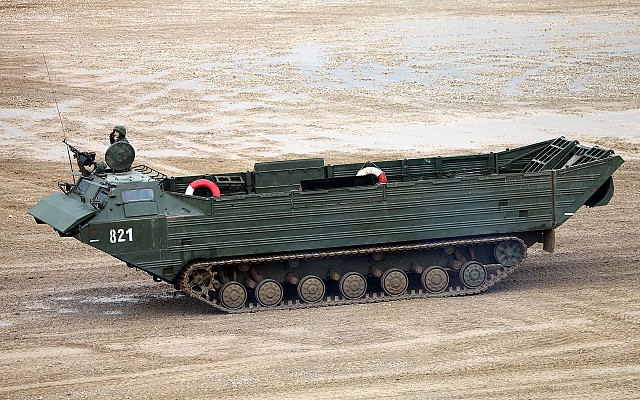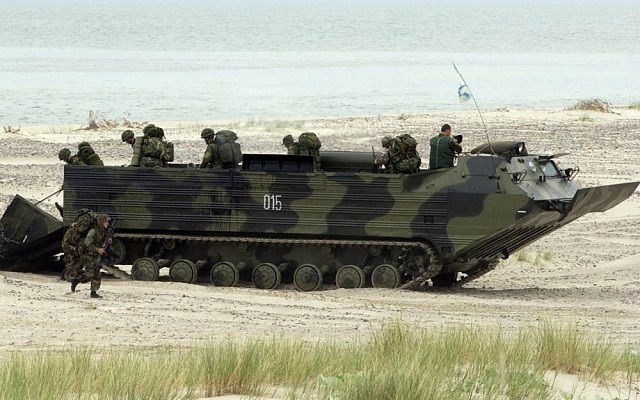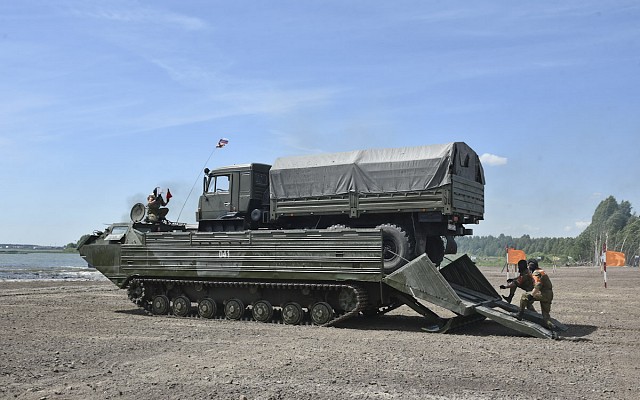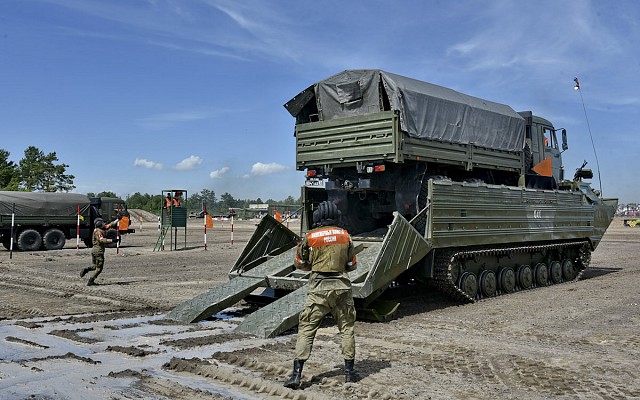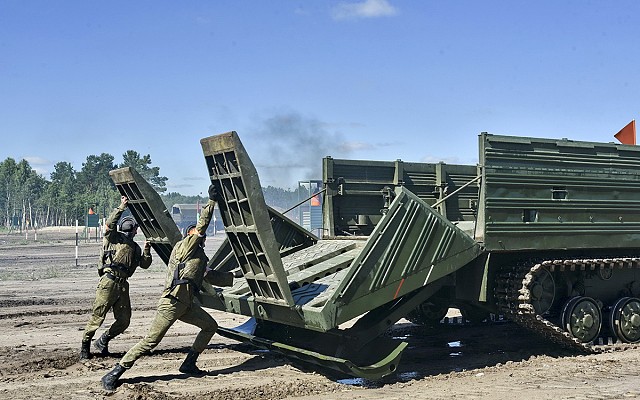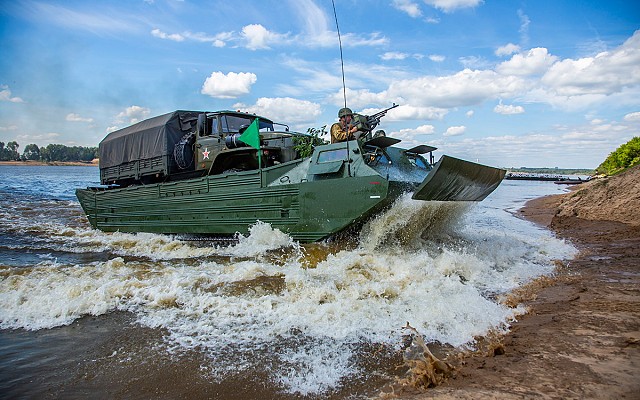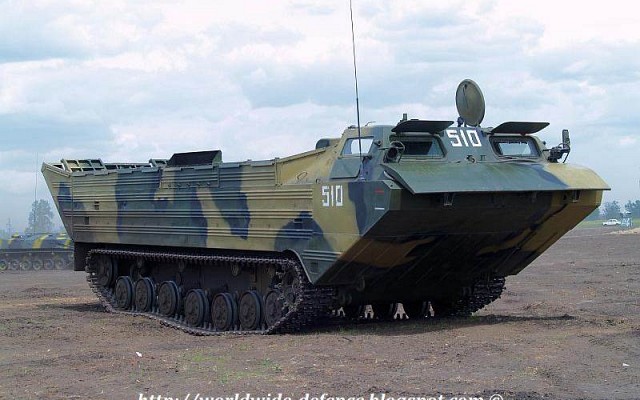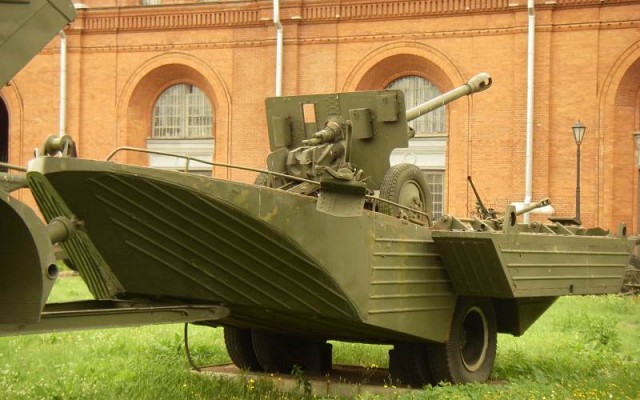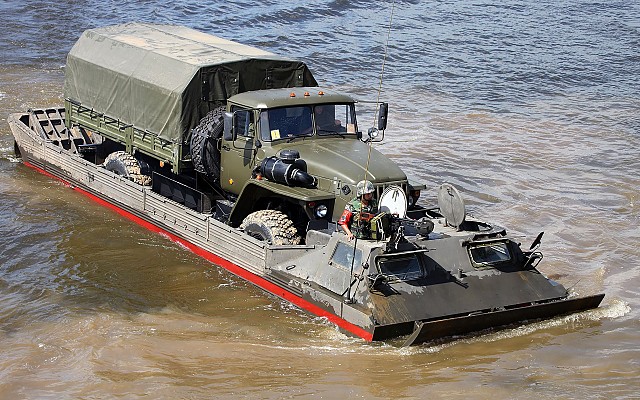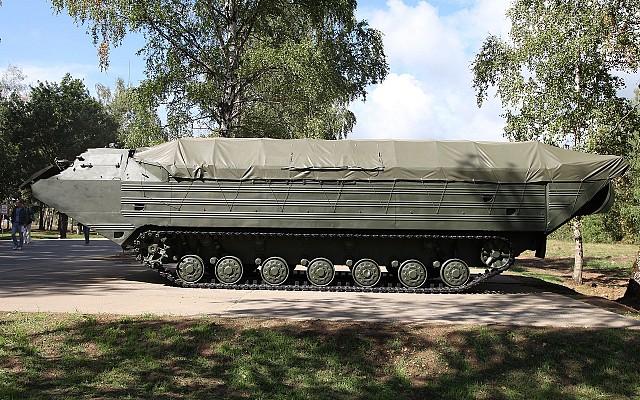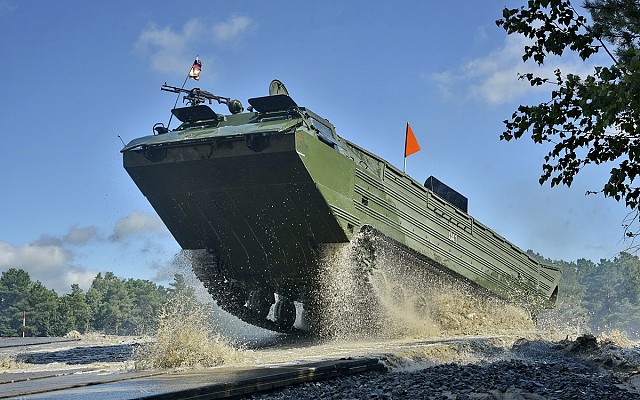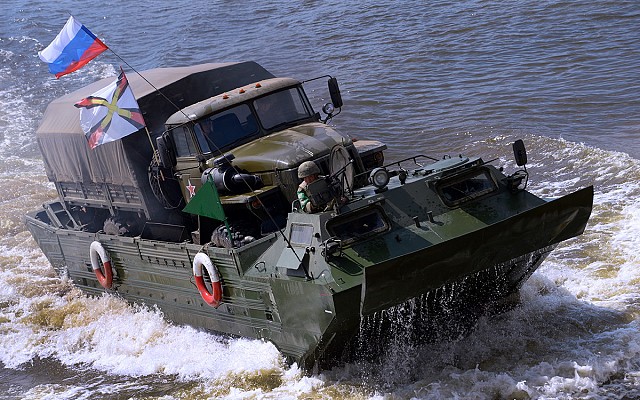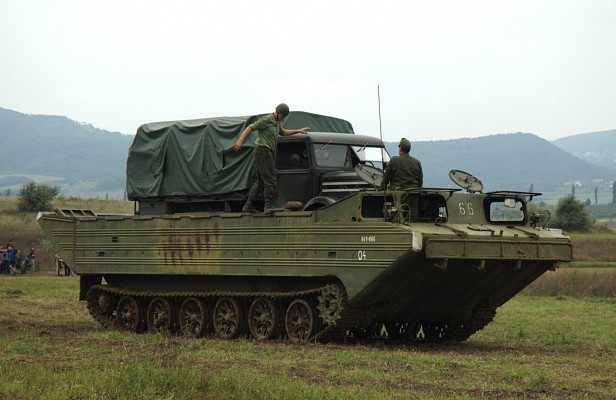PTS-2
Overview
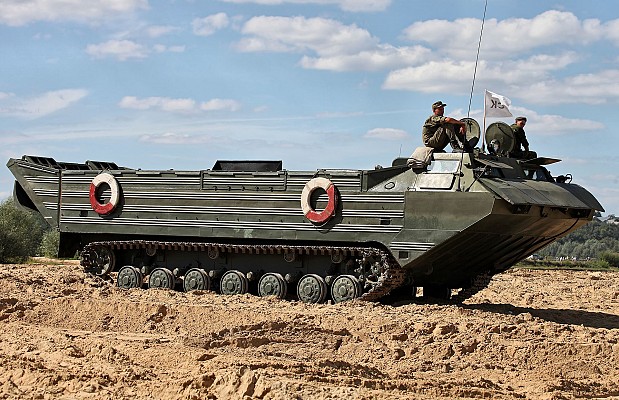
PTS-2
Right side view of a PTS-2 amphibious transport vehicle.
Source: Vitaly V. Kuzmin -
© GNU Attribution - Share Alike license
Russian for "medium amphibious vehicle 2"
Ukraine
Description
Introduction
The PTS-2 is a late Cold War era amphibious cargo vehicle of Soviet origin. It is a further development of the PTS-M and is based around the newer MT-T tracked chassis. The PTS-2 is a more capable vehicle that is better suited to salt water operations, albeit in calm weather. Although most source indicate a start of production in 1985, these could have been in service as much as a decade earlier.
Design
The PTS-2 follows the same design pattern as the PTS-M. The cabin is located at the front, the engine in the middle and the large open cargo area is accessed via the rear ramp. The PTS-2 is based on the MT-T chassis which has the running gear of the T-64 main battle tank. The PTS-2 is a larger vehicle with a more powerful engine than the PTS-M. This results in better payload capacity and increased mobility.
Cargo capacity
The PTS-2 has a 12 ton cargo capacity. This is a 2 ton increase over the earlier PTS-M and the cargo area is also longer. The cargo area is large enough to carry a 5 t truck, 75 troops or 12 stretchers. The PKP amphibious trailer can be towed by the PTS-2 in order to increase the transport capacity.
Mobility
The PTS-2 has a 720 hp diesel engine derived from the engine used on the T-72 main battle tank. This provides it with a road speed of 60 km/h and 12 km/h in the water. The increased mobility of the PTS-2 makes it more suitable for use in salt water than the earlier PTS-M.
Users
The PTS-2 was adopted by Soviet forces in the mid 1980's, possibly even earlier. Unlike the earlier PTS-M it wasn't widely exported. After the break-up of the Soviet Union the PTS-2 is in service with Russia and Ukraine.
Media
Details
Related articles
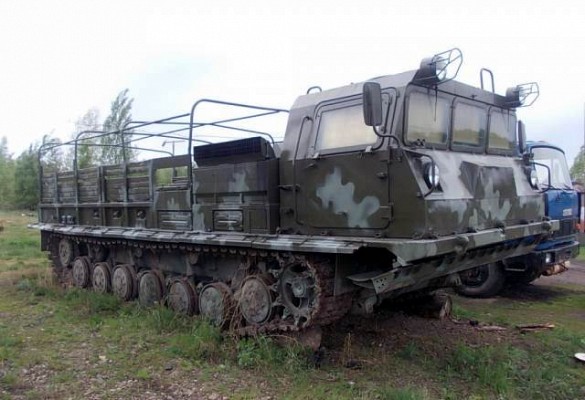
MT-T
The PTS-2 is based on the chassis of the MT-T prime mover, which in turn is based on the T-64 main battle tank.
